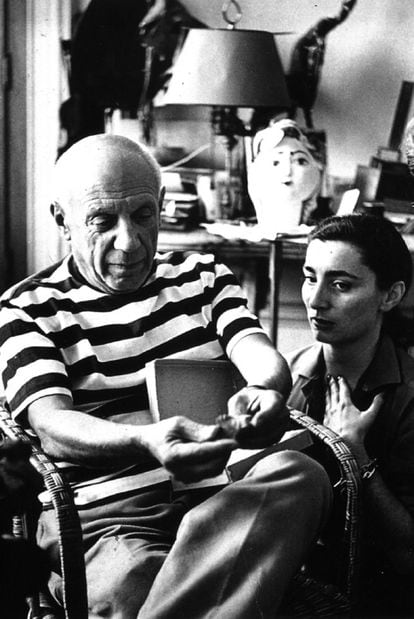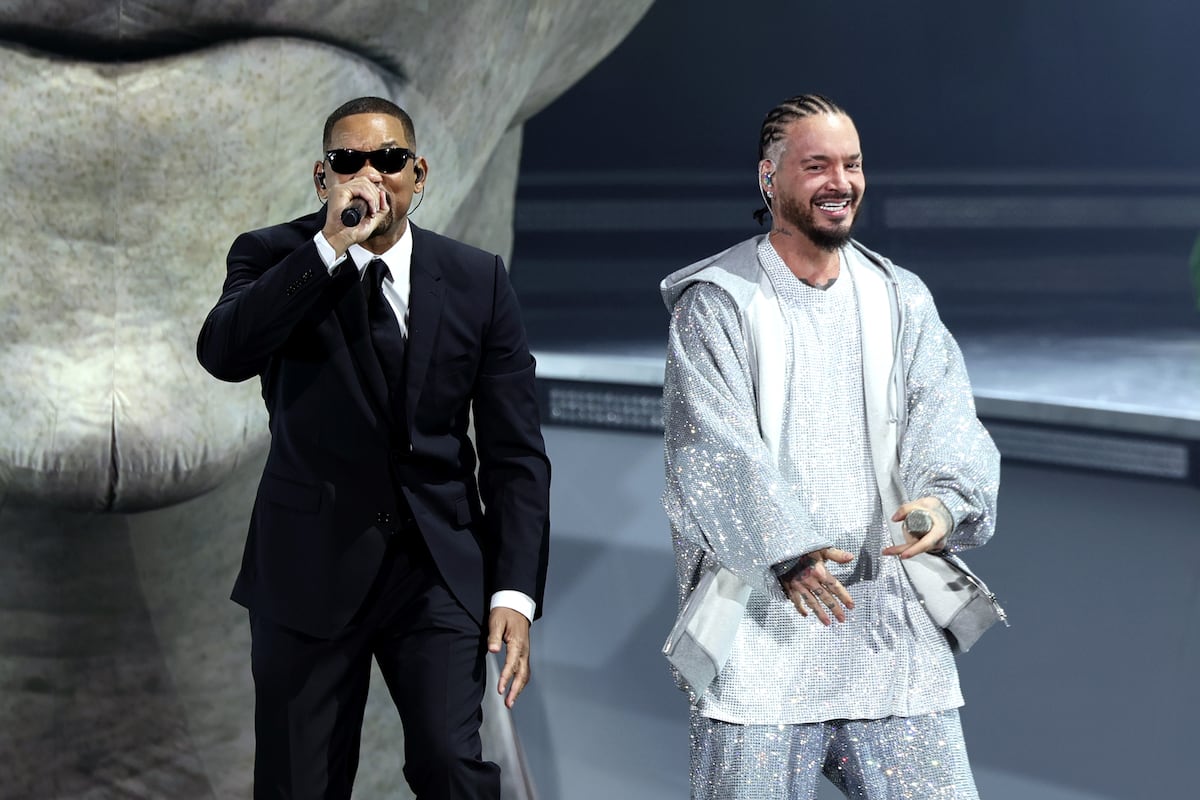Australian comedian Hannah Gadsby didn't beat around the bush in her monologue
Nanette
, his farewell to comedy, which was presented in theaters in 2017 and broadcast on Netflix in 2018. "Picasso, I hate him, although if you think about cubism, you can't hate him," he said in this multi-award-winning show, one of the most watched that year on the platform.
Graduated in Art History, LGTBI activist, the acid monologist has managed to transform her traumas and the brutal abuses she has suffered into jokes, but that refuge in humor, she explained in that performance, was about to end her.
“She should be more generous with him [Picasso] because she had a mental illness, but nobody knows because she doesn't fit in with the mythology that surrounds her.
Picasso is a passionate, virile, tormented genius, and there is no room for anything else,” she says, before diagnosing “misogyny” as the evil that afflicted the painter.
“Do we have to learn to separate man from his art?
But then, what would happen if you remove the name of his paintings, for how much would they be auctioned? ”, She asked her ironically and furiously.
The celebration of the year of Picasso in 2023, which commemorates the 50th anniversary of his death on April 8, 1973, raises the question of to what extent or in what way the recurring and blunt feminist criticism of the creator should be addressed.
In the midst of the Me Too movement, Gadsby's monologue conveyed to a wide audience the controversy that has surrounded the figure of Picasso and his relationship with women, a controversy that is by no means new and about which much has been written, but that in the 21st century has gained new relevance.
There have been protests and a symposium at the Picasso Museum in Barcelona,
podcasts
dedicated to the subject or artists who have described him as a Harvey Weinstein of his time.
With Fernande Olivier, Eva Gouel, Olga Khokhlova, Marie-Thérèse Walter, Dora Maar, Françoise Gillot and Jacqueline Roque he maintained his most stable relationships, but in his long list of conquests are Gabrielle Lapeyre, Irène Lagut, Elvira Paladini, Émilienne Pâquerette or Geneviève Laporte, among others.
And his private life was not excluded from his art: women form a central part of his work, in which he frequently speaks of desire, power and attraction.
Pablo Picasso, photographed at his home and studio in Mougins (France), on October 13, 1971. Ralph GATTI (afp / getty images)
“On the one hand, he is the best painter of the 20th century and no one will disagree with this.
On the other hand, there is his life as a man, and it seems clear that he was a psychological abuser and, according to some testimonies, maybe a physical one as well”, explains Victoria Combalía, historian and art critic who wrote the canonical biography of Dora Maar and is well acquainted with the Malaga's work.
“Picasso is a man educated in the 19th century, a time full of mistreatment.
We pay more attention to him because he is the genius, but among male creators this is very widespread”, reflects Combalía on the phone, before mentioning narcissism as a frequent pathology among artists.
“What would we have to say about Francis Bacon, Edvard Munch or Caravaggio?
In relation to Picasso, the subject should not be ignored, but neither should it be treated in a sensationalist way.
Obviously there is no need to justify it, but his work is still just as good.
Women are a central issue in his work and eroticism is extremely important;
good historians and experts have noticed that too”.
An expert in the painter's work, Carmen Giménez planned and directed the Picasso Museum in Malaga and has curated some of the most important exhibitions dedicated to the artist from Malaga on both shores of the Atlantic.
The most recent, this summer's impressive exhibition,
Picasso-El Greco,
at the Kunstmuseum in Basel, which is also part of the Picasso year, although the program officially starts on September 12.
Giménez will also curate a sculpture exhibition by the artist at the Guggenheim Museum in Bilbao, a commission she received from José Guirao, who, until his death on July 11, was the commissioner designated by the Ministry of Culture for the commemorations of 2023. His successor is Carlos Alberdi, who anticipates that in the rereading of Picasso in the 21st century that they have planned to do, feminist objections will be addressed, for example, in a symposium that is being prepared for December at the Reina Sofía Museum.
“Times have changed and I understand that my grandchildren and I don't see things the same way,” Giménez says over the phone.
“But Picasso cannot be canceled.
If the subject of his relationship with women is addressed, it must begin by saying that he cannot be judged with today's mentality, and it must be done well, leaving a little of what is always repeated, "he points out. the.
Pablo Picasso and Jacqueline Roque in Cannes.ANDRÉ VILLERS
Cécile Debray, president since last November of the Picasso Museum in Paris, received with her appointment the challenge of celebrating the Picasso year, which had been planned as a transnational event, co-organized by France and Spain, but which would expand to more countries.
"It's an excellent opportunity to address his extensive legacy on an international scale," she says over the phone.
There will be 40 exhibitions in different locations in Europe and North America that, from a "historiographical approach", will address specific research or specific periods in the extensive Picasso production, from its relationship with prehistory and cave art, at the Pompidou, to its masculinity and relationship with women, at the Brooklyn Museum.
“The challenges posed by this anniversary are multiple.
There have been many exhibitions of Picasso,
but in the 50 years since his death the study of his work has changed.
Showing an artist also implies raising questions and I consider it very important to reach a young audience”, says Debray.
“The figure of Picasso has aroused protests from the Me Too, aggravated by malicious speculation and, therefore, I believe that a historiographical approach provides the appropriate distance for analysis.
Finding the balance to honor his legacy and appeal to younger generations requires careful and precise.”
I believe that a historiographical approach provides the proper distance for analysis.
Finding the balance to honor his legacy and appeal to younger generations requires careful and precise attention.”
I believe that a historiographical approach provides the proper distance for analysis.
Finding the balance to honor his legacy and appeal to younger generations requires careful and precise attention.”
The painter Pablo Picasso and his wife Olga in Leicester Square, London, in 1919.
Predator is not the adjective that I would apply to the painter Brigitte Benkemoun, journalist and author of two books dedicated to two fundamental women for Picasso, Dora Maar and Marie-Thérèse Walter.
“Dominant, manipulative, selfish, possessive, he was, but he didn't enjoy causing pain, except perhaps in the sadomasochistic relationship he had with Maar,” she writes in an email.
“Her goal of his was not to see women suffer, but his art.
When he got tired of them because he felt they were no longer essential to his creations, he would leave them."
Nor does it seem appropriate to brand the man from Malaga as a pedophile because he established a relationship with Walter when she was 17 years old and he was over 40. “She was not a girl.
Calling that story pederasty only fuels the caricature and confusion surrounding Walter's fate."
The critic and academic Estrella de Diego, who will deliver the opening conference of the commemorations of the Spanish part in the Prado Museum on September 12, is clear that "you may not like Picasso as a person and see that his work is overwhelming".
The year of Picasso, she maintains, is an opportunity to "review and rethink" the artist, not only his relationship with women, "which overshadows everything else", but "also with men, with his environment" .
De Diego points to Picasso's relationship —”an artist who built himself as a brand as much as Dalí”— with low culture as one of the areas on which it would be interesting to dwell.
"Picasso could do with stopping being Picasso for a while and putting him in a place where he can be talked about," she suggests.
“That idea of the uncontrollable creative genius phenomenon has never been revised,
The fragility of Picasso is not exactly the starting point of the exhibition being prepared at the Brooklyn Museum in New York by Catherine Morris and Lisa Small, curators of feminist art and European art, respectively.
As explained by videoconference, they will try to approach and "revisit, from the complexities posed by the current moment, a historical figure who, whether we like his biography or not, continues to play a fundamental role in the history of art".
'Faun discovering a woman', one of the engravings that Picasso made for the dealer Ambroise Vollard and which is part of the ICO Collections Museum in Madrid.ICO MUSEUMS
Along with Morris and Small, working on the exhibition, as guest curator, is precisely the comedian Hannah Gadsby, with whom they had a first meeting in 2018 after seeing her famous monologue, and they resumed contact when the MoMA proposed to the Brooklyn Museum to become part of it. of the year Picasso from a feminist perspective.
"The three of us are working to create the framework for a conversation around Picasso," says Morris.
“Her power from him emanated perhaps from his genius, but perhaps also from a series of external factors that allowed him to be who he was.
What does that mean now?
Why does it still captivate our imagination?
He has somehow become a symbol of a story that today is being rewritten on many fronts”, she adds, and speaks of the exhibition as a good opportunity to ask questions, rather than give answers.
The exhibition is not presented "as a referendum on his failures as a person: neither justification nor burial," they explain.
The erasure or cancellation of Picasso makes no sense —"he is part of our history"—, although the curators understand that there are voices that do not share this, and they sense that they will make themselves heard when the exhibition opens in June 2023. His The project tries to open the debate to issues that go beyond the “polarization” generated by Picasso: “He is presented as the brilliant genius who launched modernity or as a monster.
But both things can be true, ”says Small.
Pablo Picasso and Dora Maar on the beach in 1935.
In
Nanette,
Gadsby talked about how Picasso freed art from having to represent three-dimensional reality in two dimensions, and how his Cubism advocated integrating all possible perspectives.
Then, she asked rhetorically if any of those perspectives were from a woman or perhaps the painter put a kaleidoscope on his genitals.
Perhaps in response to this, contemporary women's art will be one of the keys to the exhibition in Brooklyn, Morris and Small detail, although they warn that the exhibition is still in its gestation period and subject to change.
The "gravitational force" exerted by Picasso will be one of the key points, as well as the intersection of "genius and fame" of an artist who has transcended like few others.
They also plan to hold debates and talks with Gadsby and other women, because this time it will be them, neither victims nor muses, who will take Picasso's word.
50% off
Subscribe to continue reading
read without limits
Keep reading
I'm already a subscriber













